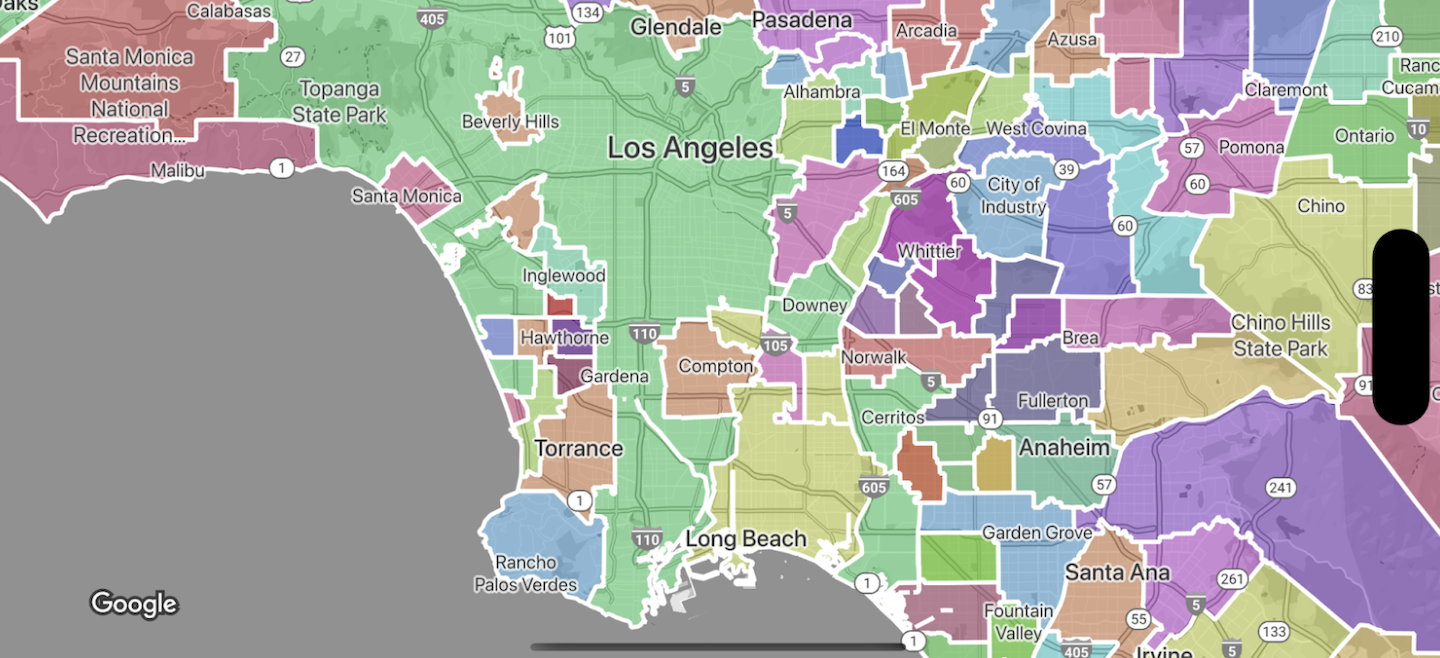Tính năng tạo kiểu dựa trên dữ liệu cho ranh giới cho phép bạn truy cập vào các đa giác của Google cho ranh giới hành chính, áp dụng kiểu cho các đa giác ranh giới, hiển thị chúng trên bản đồ.

Tính năng tạo kiểu dựa trên dữ liệu cho ranh giới cho phép bạn nhắm đến các khu vực theo mã địa điểm và áp dụng kiểu tuỳ chỉnh cho các đa giác ranh giới trên bản đồ. Mỗi loại đối tượng đại diện cho một loại khu vực; bạn chọn loại đối tượng cần bật khi định cấu hình kiểu bản đồ. Tham khảo phạm vi ranh giới của Google để xem phạm vi ranh giới theo từng quốc gia.
Loại tính năng
Tính năng tạo kiểu dựa trên dữ liệu cung cấp quyền truy cập vào ranh giới của Google cho các loại đối tượng đại diện cho khu vực hành chính. Các khu vực hành chính được phân loại theo chức năng, ví dụ: quốc gia, tiểu bang, địa phương và mã bưu chính. Các loại đối tượng được sắp xếp theo cấp hành chính, cấu trúc của cấp này sẽ khác nhau tuỳ theo quốc gia. bao gồm:
GMSFeatureTypeCountry– Thực thể chính trị quốc gia, thường là loại cấp cao nhất.GMSFeatureTypeAdministrativeAreaLevel1– Khu vực hành chính cấp một dưới cấp quốc gia. Trong phạm vi Hoa Kỳ, các cấp hành chính này là tiểu bang.GMSFeatureTypeAdministrativeAreaLevel2– Khu vực hành chính cấp hai dưới cấp quốc gia. Tại Hoa Kỳ, các cấp hành chính này là hạt.GMSFeatureTypeLocality– Một pháp nhân chính trị là thành phố hoặc thị trấn hợp nhất.GMSFeatureTypePostalCode– Mã bưu chính, được dùng để gửi thư bưu chính trong quốc gia.GMSFeatureTypeSchoolDistrict– Một học khu; bao gồm các trường tiểu học, trung học cơ sở và trung học phổ thông.
Các khu vực hành chính được thể hiện trên bản đồ dưới dạng các lớp đối tượng; mỗi loại có lớp riêng. Các lớp đối tượng được bật theo từng kiểu bản đồ. Bạn có thể chọn lớp đối tượng cần bật khi thiết lập kiểu bản đồ trong bảng điều khiển Google Cloud.
Tạo kiểu cho đa giác ranh giới
Bạn có thể áp dụng kiểu cho các đa giác ranh giới để tô (màu sắc, độ mờ) và vẽ nét (màu sắc, độ mờ, độ đậm của nét vẽ). Sử dụng kiểu để:
- Tạo kiểu cho một đa giác ranh giới hoặc hiện tất cả ranh giới cho một loại đối tượng.
- Tạo bản đồ chuyên đề.
Phạm vi phủ sóng của Google Boundaries cho biết phạm vi cung cấp của các loại đối tượng theo từng quốc gia.

